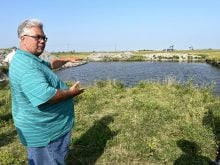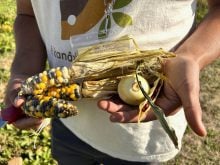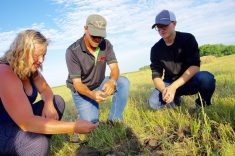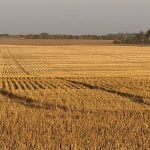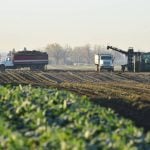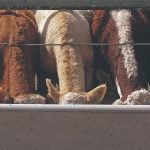Glacier FarmMedia – An interesting email landed in my inbox earlier this fall.
It was from a freelance writer and Glacier FarmMedia contributor Rebecca Hannam, and its subject was a press release from Ontario’s University of Guelph, often described as “Canada’s food university.”
The document touted how the University of Guelph’s Child Care and Learning Centre (CCLC) had reduced its carbon footprint by removing animal products from the menu and only serving a plant-based diet.
Read Also

100TH ANNIVERSARY: Where does ‘co-op’ fit in the Manitoba Co-operator after a century of farm reporting?
The Manitoba Co-operator is no longer owned by a co-operative, as it was at the start of its run, but Manitoba’s farm paper still reflects the spirit of co-operation that built this province
Hannam’s email to me asked, “Why is no one talking about this?”
After reading the release, I thought she posed an excellent question.
I commend any institution that takes steps to reduce its environmental impact, but I get offended when the impact is over-inflated.
The release leaves the impression that the university may be leaning toward the idea that plant-based diets are more sustainable than those that include animal products. This is concerning given the University of Guelph’s emphasis on its role as a food knowledge leader.
I think we can all agree that food is anything that can be eaten and digested to provide our bodies with energy, and includes more than plant products.
In a report it commissioned from Foodsteps, CCLC’s dietary switch has apparently allowed for a monthly savings of 1,900 kilograms of carbon dioxide (CO2) compared to its previous menu. The centre made the menu switch in 2020, according to its director, Valerie Trew.
“The need for efficiency, safety and inclusion is what drove this switch at first,” said Trew in the release, “but we’ve learned it connects to our mission of caring for children and to the university’s larger mission of improving life and sustainability. It’s small steps like this that can make a difference.”
Indeed it is a small step. I don’t know how many children are at the centre, but I would guess most are driven there by parents or caregivers in a fossil fuel-powered vehicle. The Foodsteps report said CCLC’s CO2 reduction is the equivalent of driving 7,800 kilometres.
Obviously, carting kids back and forth to daycare is not equal to driving nearly 8,000 kilometres every month, but when you consider driving in a city as big as Guelph, daily distances can add up quickly and idling at numerous stoplights in rush hour adds to the emissions count.
In a February 2022 report, the U.S. Environmental Protection Agency compiled global data on greenhouse gas emissions. The biggest contributor to CO2 by far is fossil fuels and industrial use (65 per cent of global CO2 emissions). Farming and agricultural processes were included in the “land use” category with forestry and other land uses, which contribute 11 per cent of global CO2.
Trew’s argument for greater efficiency and inclusion is easier to swallow. The centre was finding it difficult and time-consuming to prepare separate meals for children allergic to dairy, eggs or other food allergens. In addition, children with allergies had to sit away from other children while eating, so mealtimes were not inclusive.
Fair enough, but I wonder how many children this affected? I’m not trying to downplay the difficulty and fear involved with caring for a child with a severe food allergy, nor do I want to see children isolated for something over which they have no control.
Severe food allergies causing anaphylaxis, however, are not prevalent. In a study published in August 2020 in the Journal of Allergy and Clinical Immunology, the prevalence of physician-reported food allergies in Canadian children was examined.
The study found that 2.53 per cent of children had reported food allergies, with the most common being an allergy to peanuts (0.8 per cent of children with food allergies), tree nut (0.6 per cent), cow’s milk (0.4 per cent) and egg (0.3 per cent).
Fruit, finned fish and shellfish were reported to each have a prevalence of 0.2 per cent. Of those children, about a third had been prescribed an epinephrine injector.
Trew says she is a vegan, and another reason to explore a new menu was based on this. I don’t judge her or anyone else for their dietary choices, but I am surprised that a university that offers programs in both plant and animal agriculture, and has some of the brightest minds in the world working to make both livestock and crops more sustainable and nutritious, could place such emphasis on one type of diet.
It’s a quick and interesting news story for sure, but “Canada’s food university” needs to be mindful of the optics of what it pushes as sustainable.
– Kristy Nudds is the editor of Farmtario.



